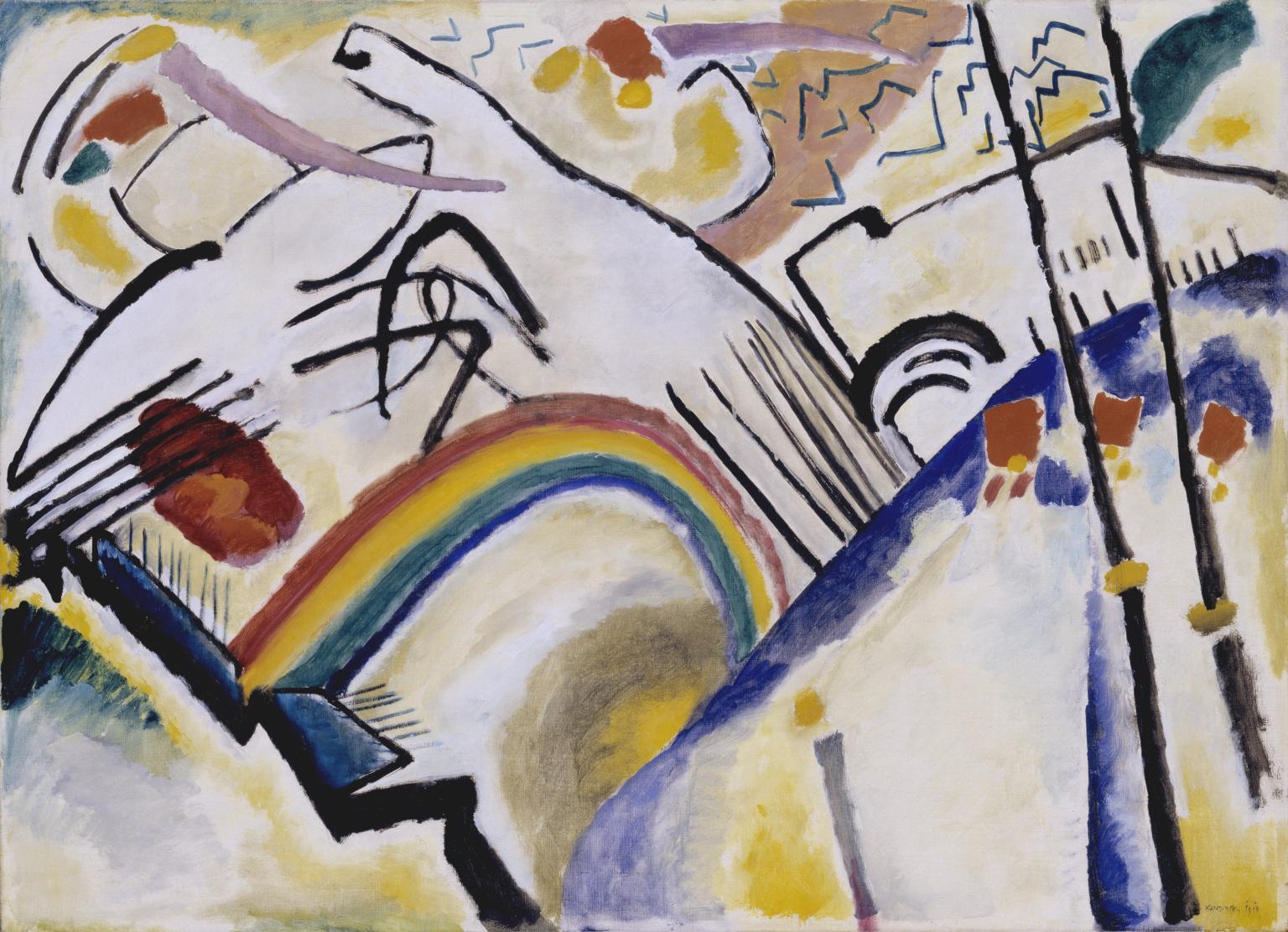The Anti-Ekphrastic: Art Inspired By Text

Writers often respond to visual art, a form known as Ekphrastic prose or poetry, and most famously as John Keats’ “Ode to a Grecian Urn.” But what happens when the form is inverted?
The anti-ekphrastic takes many forms: The Futurists were the first to create sound poetry, or the art of connecting literary and musical composition specifically for the purpose of performance and without the use of words. The Dadaists invented more specific types of sound poetry by communicating primarily through primitive movement or through different languages and rhythms simultaneously alongside other artists. Sound poetry performed a function that visual art couldn’t, which is to say that visual artists manipulated a written form into an auditory event: a spoken painting or photograph of an experience.
The anti-ekphrastic itself is an inherent rejection of traditional literary forms, which is likely why Fluxists, who rejected galleries and institutions, produced work like artists’ books. The definition of “book” became fluid within the Fluxist community: most notably, Yoko Ono compiled an artists’ book of event scores called Grapefruit. Event scores were simple actions or ideas reimagined into performance and inspired by John Cage’s Experimental Music Composition classes. One might even call Grapefruit a silent record of sound poetry. Dieter Roth also compiled Literature Sausage, an artist’s book made by using traditional sausage recipes and replacing the meat with a pulped book. The cover of the book was then pasted onto the skin of the sausage. Literature Sausage, which was technically composed of onions and spices alongside the book mix, called into question the form of the novel. While Literature Sausage was literally a book, it was also unreadable, thereby stripping the book of its definition and repurposing it: a response to itself.
It’s through the anti-ekphrastic that form also loses authorial identity – that is, an anti-ekphrastic piece is more pliable than other forms of art when it becomes the result of multiple artists’ efforts. Artist’s books in particular were a collaboration between visual artists and writers that acted as an alternative to making art in isolation. While collaboration forced a blended authorial identity, it also demanded communication between artists: ideas spun through words for the sake of creating art, which became a necessary step or process in the making of a piece. This idea is most apparent in works like Documentado/Undocumented Ars Shamánica Performática, which is a collection of performance texts (not unlike Grapefruit) on identity and race compiled by five separate artists. The work itself is a question of the novel’s identity in the 21st century: art inspired by text.
From this perspective it’s no wonder that contemporary authors have questioned the form of the novel, which in books like Mark Z. Danielewski’s The Familiar are more visual art than literature. Or, take artist Brian Dettmer, who repurposes materials whose functions have been lost, uses surgical tools on ready-made’s like books to create new visual art in the Dadaist vein. As Felicia Rice, one of the collaborators of Documentado, explained: the book’s role is old technology, and as often happens, the old technology becomes a new art form: the anti-ekphrastic.

